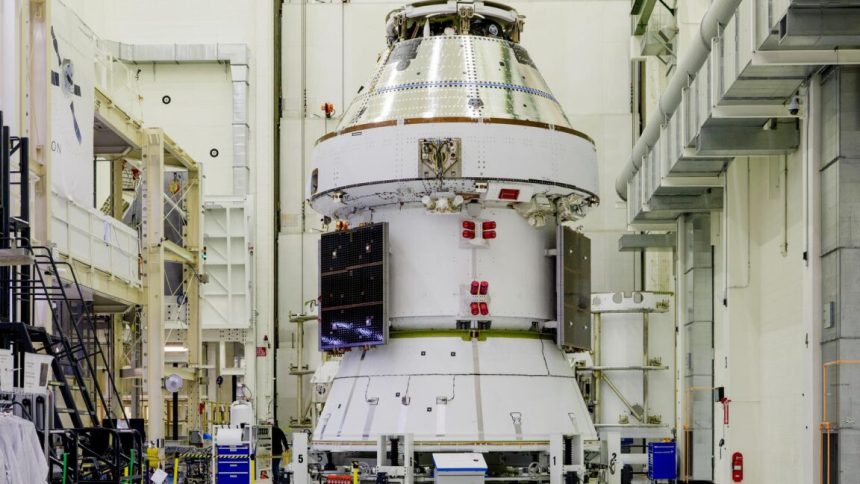Artemis III: A brand-new spacecraft.
Artemis IV: A brand-new spacecraft.
Artemis V: Will reuse approximately 250 components, primarily life support and avionics equipment, from Artemis II.
Artemis VI: Will reuse primary structure (pressure vessel) and secondary structures (gussets, panels, brackets, plates) from Artemis III Orion, and approximately 3,000 components.
Lockheed plans to build a fleet of three largely reusable spacecraft, which will make their debuts on the Artemis III, IV, and V missions, respectively. Those three vehicles would then fly future missions, and if Lockheed needs to expand the fleet to meet demand, it could.
Credit:
Lockheed Martin
This photo, from 2023, shows the Orions for Artemis II, III, and IV all together.
Credit:
Lockheed Martin
Of course, Orion can never be made fully reusable. The service module, built by Europe-based Airbus and providing propulsion, separates from Orion before reentry into Earth’s atmosphere and burns up.
“We probably should call it maximum reuse, because there are some things that are consumed,” Shireman said. “For instance, the heat shield is consumed as the ablative material is ablated. But we are, ultimately, going to reuse the structure of the heat shield itself.”
Vectoring along a new path
Orion is always going to be relatively expensive. However, officials said they are on track to trim the cost of producing an Orion by 50 percent from the Artemis II to Artemis V vehicles and in follow-on missions to bring this down by 30 percent further or more. Minimizing refurbishment will be key to this.
Lockheed will never achieve “full and rapid reusability” for Orion like SpaceX is attempting with its Starship vehicle. That’s just not the way Orion was designed, nor what NASA wants. The space agency seeks a safe and reliable ride into deep space for its astronauts.
For the time being, only Orion can provide that. In the future, Starship may well provide that capability. Blue Origin and other providers may develop a deep space-capable human vehicle. But Orion is here and ready for its first astronauts in 2026. It will be years before any alternative becomes available.
It is nice to see that Lockheed recognizes this advantage won’t last forever and that it’s moving—or should we say, Vectoring—toward a more sustainable future.

Leave a Reply